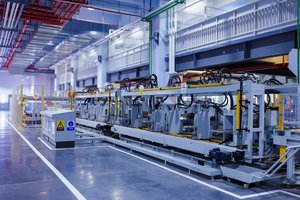Understanding EDM Failure: Why It Happens and How to Prevent It
Electrical Discharge Machining (EDM) is a go-to process for intricate, high-tolerance components. However, even the most advanced EDM machines can encounter failures that disrupt production and compromise part quality. Recognizing the root causes of EDM failure is the first step toward minimizing risks and maximizing efficiency.
Let’s break down the most common EDM failure modes, their underlying causes, and proven solutions to keep your operations running smoothly.
🔧 Key Causes of EDM Failure
1. Electrode Wear and Degradation
EDM relies on controlled spark erosion, but excessive electrode wear leads to:
– Poor surface finish
– Dimensional inaccuracies
– Increased machining time
Common culprits:
✔ High discharge currents
✔ Incorrect electrode material (e.g., using graphite instead of copper for fine details)
✔ Improper flushing, causing uneven wear
2. Dielectric Fluid Contamination
The dielectric fluid cools and flushes eroded particles. Contamination causes:
– Arcing and short circuits
– Reduced spark efficiency
– Corrosion of machine components
Signs of fluid issues:
✔ Discolored or foamy dielectric
✔ Excessive sludge buildup
✔ Unstable sparking
3. Improper Machining Parameters
EDM is highly sensitive to settings like voltage, pulse duration, and current. Incorrect parameters result in:
– Slow material removal rates
– Thermal damage to the workpiece
– Premature electrode failure
Optimal settings depend on:
✔ Workpiece material (e.g., hardened steel vs. titanium)
✔ Electrode type (copper, graphite, tungsten)
✔ Desired surface finish


✅ Solutions to Prevent EDM Failure
1. Optimize Electrode Selection and Maintenance
- Use high-quality materials (copper for fine details, graphite for roughing).
- Monitor wear rates and replace electrodes before critical failure.
- Implement adaptive machining to compensate for wear in real time.
2. Maintain Dielectric Fluid Purity
- Regularly filter and replace fluid to prevent conductivity issues.
- Monitor fluid levels and temperature—overheating reduces efficiency.
- Use deionized water in wire EDM to minimize contamination.
3. Fine-Tune Machining Parameters
- Start with manufacturer-recommended settings, then adjust based on results.
- Use adaptive control systems to auto-adjust for optimal sparking.
- Test on scrap material before running critical jobs.
📊 Data-Driven EDM Performance Metrics
| Issue | Optimal Range | Warning Signs |
|---|---|---|
| Electrode Wear Rate | < 0.1 mm³/min | Rapid wear, poor finish |
| Dielectric Resistivity | 10–100 kΩ·cm (Wire EDM) | Low resistivity, arcing |
| Spark Gap Voltage | 40–120 V (Varies by material) | Unstable discharges |
🔧 Best Practices for Long-Term EDM Reliability
- Routine Machine Inspections – Check servo systems, filters, and power supplies.
- Operator Training – Ensure teams understand parameter adjustments and failure signs.
- Preventive Maintenance – Schedule fluid changes, electrode replacements, and calibration.
Final Thoughts: Minimizing EDM Failure for Peak Performance
EDM failures can be costly, but with proactive maintenance, proper parameter settings, and high-quality consumables, most issues are preventable. By understanding the root causes and implementing these best practices, manufacturers can reduce downtime, improve part quality, and extend machine longevity.
Need expert support for your EDM processes? [Contact our team] for tailored solutions that keep your machining operations running at peak efficiency.
